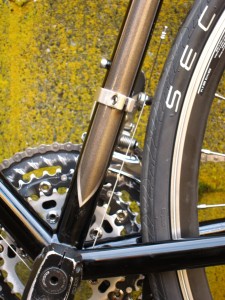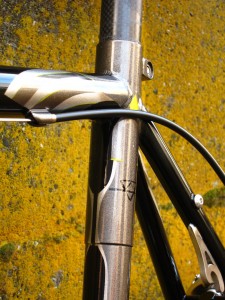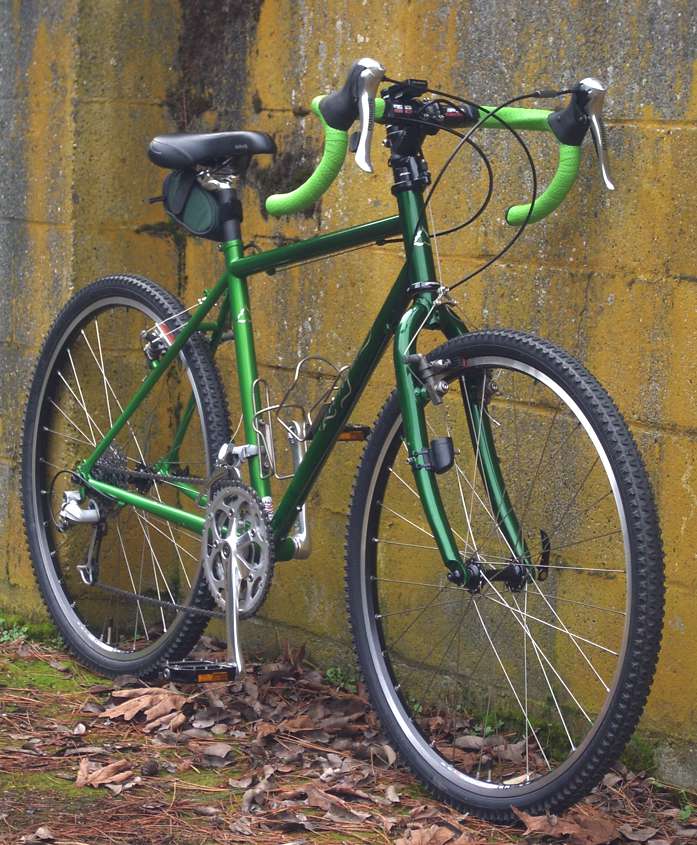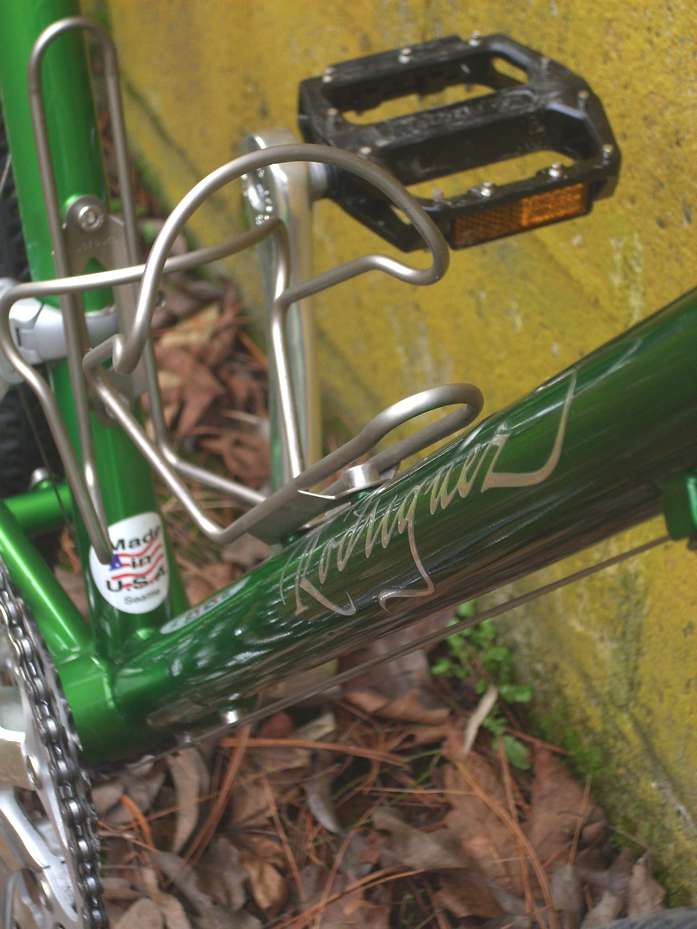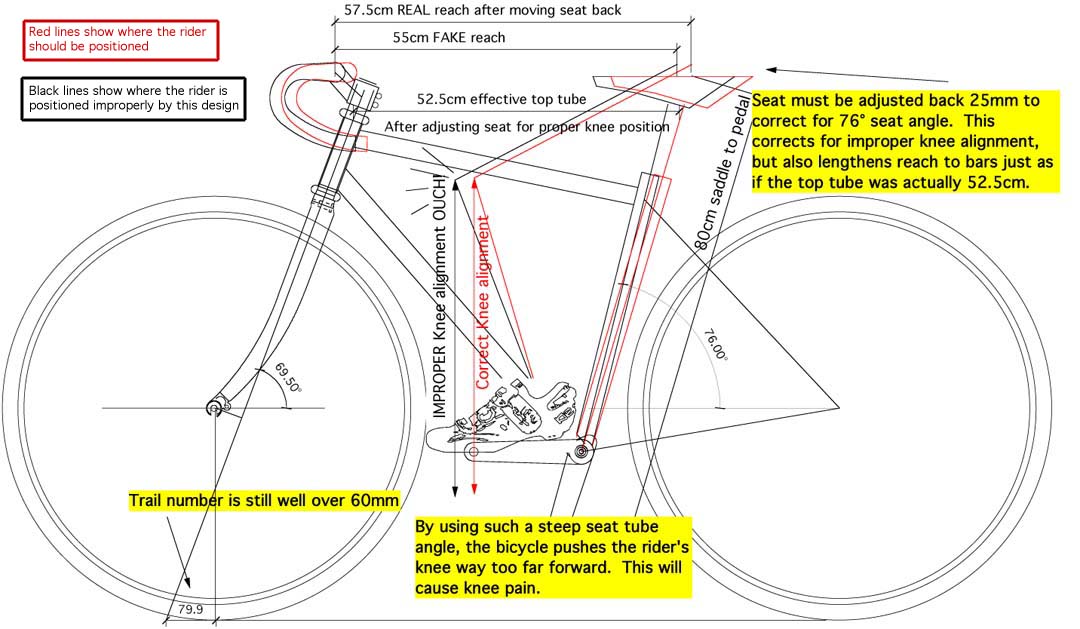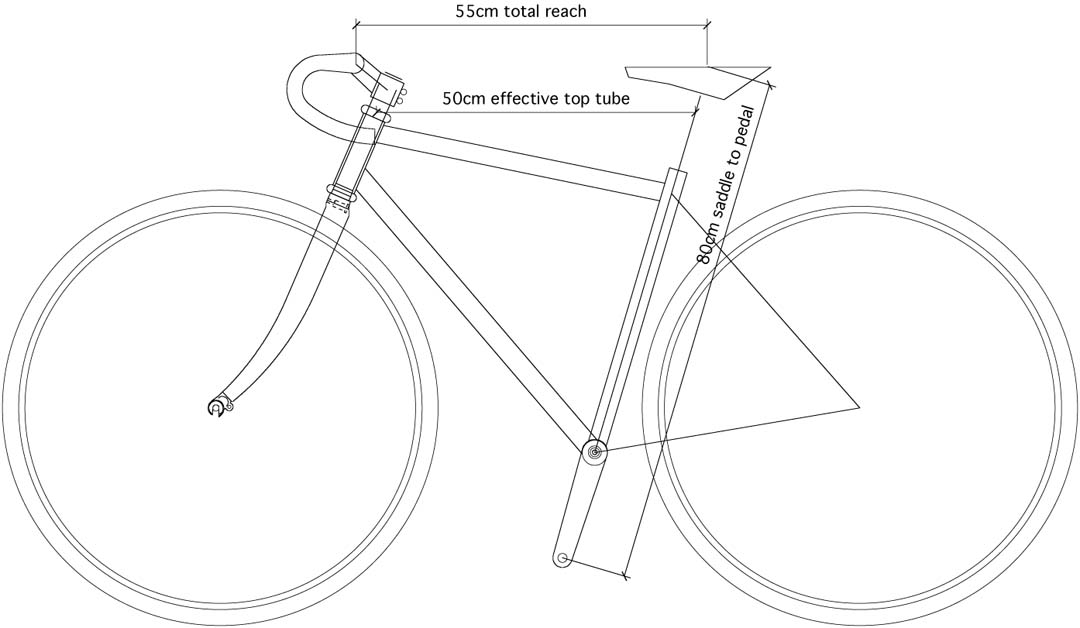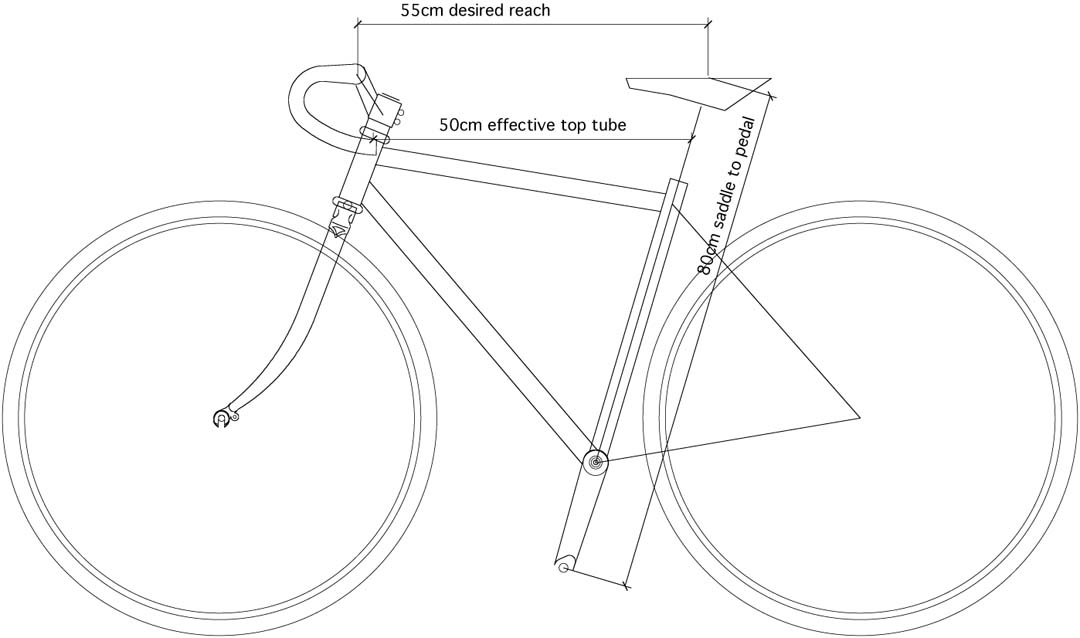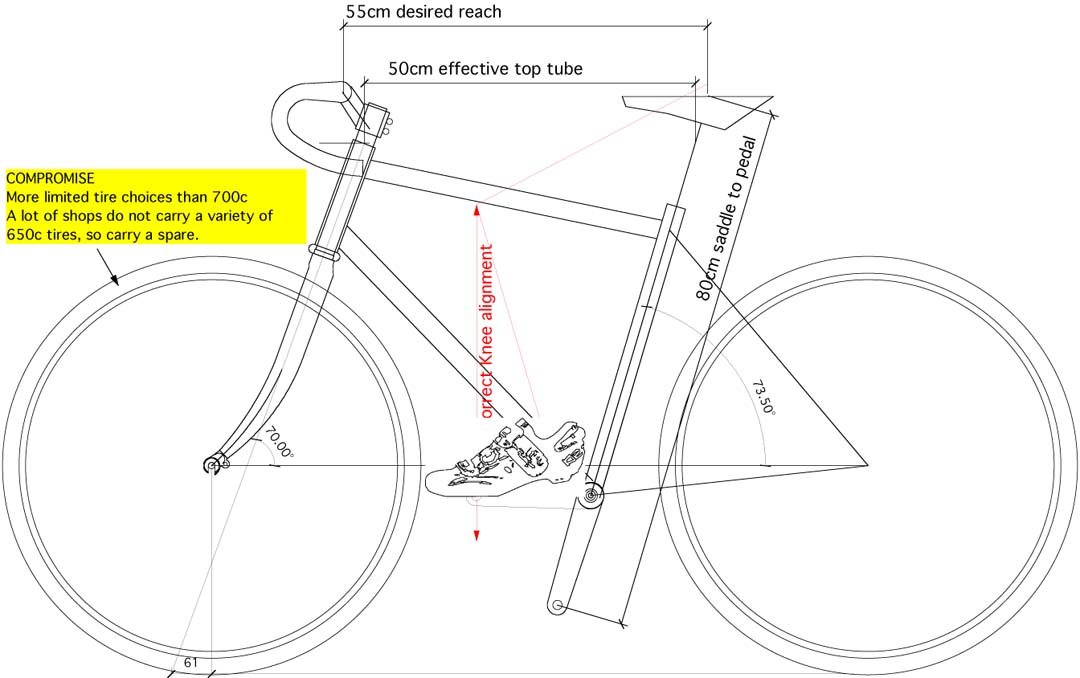This is part 8 of 8. Here is the start!
When someone in the industry (people in the industry should know better) tells a smaller rider “small wheels are slower”, what I hear them saying is “riding with knee pain, discomfort in your shoulders, neck, back and numbness in your hands on a bicycle that’s harder to control can make you ride faster.” This doesn’t sound like good advice to me. Especially when there’s so much proof that their “smaller=slower” claim is completely false.
The truth is, when someone tells you “smaller wheels are slower”, what they are saying is “I have nothing with proportional wheels to offer you”. At Rodriguez, we’ll offer you either size, and give you the facts about both.
There’s really two myths that people are told about why 650c wheels are slower than 700c. We can easily put the facts together to show that both of these theories, while having some truth in them, ignore several other aspects of the differences. Those differences easily offset the reasoning that is used by so many in bike shops around the country to try and scare petite riders into bigger wheels.
Warning: Severe Facts Ahead
Slow myth 1.) Salesperson says
“Smaller wheels have to make more rotations to travel the same distance.”
This part is true. A 650c wheel has to turn 823 rotations to travel 1 mile, while a 700c wheel has to rotate 763 times for the same distance. Salesperson says “More rotations = more friction in the bearings and that causes you to go slower.” …..not exactly. All other things being equal, this would be true, but there’s more to the equation.
What the salesperson doesn’t know, or has neglected to inform you of is that the 650c wheels are 8% lighter than the exact same wheels built in 700c. Think about it. A smaller rim, shorter spokes, smaller tire, tube and rim strip all add up to big weight savings for the 650c. Just for fun, ask that same salesperson if heavier wheels are faster than lighter wheels? We all know of course, that lighter wheels are the best way to speed up any bicycle. You could also ask him what wheel size is used on bicycles that hold land speed records? That’s because of those darn facts again. This time it’s rotational mass….read on and see what I’m talking about.
Friction, Bricks, and Rotational Mass
When an object (like a bicycle wheel) is spinning, it is subject to the laws of rotational weight. Rotational weight is the ‘evil’ that everyone with any size of wheel is trying to get rid of. This is because of rotational mass. Imagine a brick tied to the end of a string. Pretty easy to hold up right? Now swing the brick around in a circle. It feels much heavier. If the brick is lighter and the string is shorter, then it’s easier to spin. Rotational weight of a wheel is magnified in this same way. As a wheel starts to spin, all of the weight out at the end of the spokes is ‘the brick’. Less rim, spoke, tire, tube, etc. equates to a ‘lighter brick’ to spin, and a smaller diameter equates to a shorter string. A lighter wheel is much easier to spin up to speed than a heavier one.
Need more scientific evidence than a ‘brick on a string’? Here’s a scientific article detailing the effect of weight and size on the rotational mass of a spinning object.
“C’mon Dan! That article was way techo-geek speak!” “How about some easy proof that everyone can understand?”
How about a spinning ice skater? Here’s a quick article of how an ice skater speeds up their spin. By pulling their arms closer to their body, they pick-up speed right?
In short
The 8% weight savings for the 650c wheel sizes easily negates the added friction for the additional rotations that it makes.
Slow myth 2.) Salesperson pulls out a gear chart and illustrates to the customer
“Smaller wheels mean that you have to turn the cranks more revolutions to travel the same distance.”
Rant Warning
I’m sorry, but I have to pause here to say, if a salesperson ever says that to you, find a way to politely leave the store. You’re either dealing with someone who’s trying to mislead you, or they really don’t know what they’re talking about. Either way, I recommend finding another shop. I’ve had people come to my shop who’ve been told this very thing by dealers who know better.
OK, rant time is over and now it’s time to educate you on why gearing shouldn’t even be an issue in this topic.
Gearing
We’ve already established that one rotation of a smaller wheel is a shorter distance that one rotation on a larger wheels right? So wouldn’t one rotation of your cranks results in less forward motion too? Actually, it has all to do with gearing ratio, and nothing to do with wheel size. Now, if you put exactly the same size gears on the 2 different bikes, then the statement would technically be true, but that would be stupid. The gear ratio is selected for your style of riding and your strength. It’s the same on a car. A Porsche with small wheels is geared higher than a dump truck. The Porsche with smaller wheels is faster than the large wheel dump truck because the Porsche is geared for higher speed. Does that make sense? We use higher gearing to accommodate for smaller wheels, and lower gearing to accommodate for larger wheels. We can make any wheel size any gearing.
In the bike industry, gear inches are calculated the following way:
(Front chain ring size) ÷ (cog size) x (wheel diameter). For 700c x 25mm tires, use 26.77 for the wheel size. For 650c x 25mm tires, use 24.8 for the wheel size.
As you can see in the sample below, a simple change of one tooth size on the cog or chain ring is all that is required to gear the bikes almost identically. Actually, in the sample below, the 650c wheel bike is geared higher than the 700c. Any shop worth dealing with is going to work with you to determine the right gear ratio for your riding style and strength at no charge anyway.
|
Here’s a quick sample of a common road bike gearing for three different wheel sizes
|
| Wheel size |
Front Chain rings |
Rear Cogs |
Highest Gear |
Lowest Gear |
| 700c wheel |
52/39 |
12-24 |
116 inches |
43 inches |
| 650c wheel |
52/40 |
11-23 |
117 inches |
43 inches |
| 24″ wheel |
55/42 |
11-21 |
113 inches |
44 inches |
You can easily see now that it’s misleading to assume that all bikes have to use the same gear sizes when showing someone a gear chart. Gearing is a non-issue when it comes to speed and wheel size.


Slow myth 3.) All serious riders ride 700c. Nobody fast rides small wheels.
“OK, these are all great facts, but are there any world class athletes that ride smaller wheels to victory?” You ask?
Well, I’m glad you asked. You could listen to what Stacia has to say. She set the cycling speed record for the Seattle Danskin Triathlon.
You could take
Lee’s word for it (if you can catch up with her).
Maybe you’d like to talk to Anna after she won first place in her first Olympic distance triathlon.
No you haven’t hear of these people, but if you’re a petite cyclist, chances are you’ve seen them kicking the shorts off of folks out there in the ‘regular people’ world of cycling that we all live in. We’ve got thousands of customers out there like Nancy B. who thought 650c wheels would be slow, but have discovered how fast they are.
Again, I’m not trying to say that smaller or bigger wheels are faster or slower, and I don’t care what wheel size that you want to ride. I ride 700c wheels on my road bikes, and 26″ wheels on my tandems. I think that it’s important though that you understand that choosing smaller wheels to make your bike fit will not make you slower.
Are smaller wheels just for the ladies? How about something for the guys? Are there any tall guys who choose to ride smaller wheels professionally? Yes! Some of the worlds fastest bicycles were piloted by men and have really small wheels.
Obviously if bigger wheels were faster, one would expect to find bigger wheels, not smaller wheels, on record setting bicycles that are ridden at speeds of over 150mph. Yet, these guys chose really small wheels. Maybe they didn’t talk to the guy at the shop.
Don’t believe me? Ask these guys and (gal).

Al Abbott sets the world record riding past 138 mph in 1973
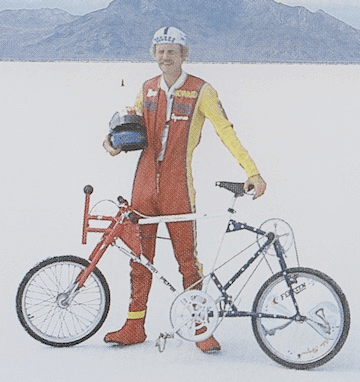
John Howard sets the world record at 152.2 mph in 1985

Famous sprinter Laurent Jalaber becomes a climbing champion on a 650c bike in the 2001 Tour de France

Denise Mueller sets the women’s world record at 147mph in 2016

Fred Rompelberg’s record setting ride of 167mph in 1995 was achieved with really small wheels
Examples like these are easy to find, and number in the thousands. Again, I’m not saying smaller wheels are faster, but just that wheel size isn’t determinant of speed.
Still have some questions? email me, I’ve got plenty of testimonials and other articles on the subject. I’ve got no incentive to push either wheel size, and I own bicycles with both wheel sizes. I just hate to see people receive bad information and get a bike that doesn’t control well and isn’t comfortable.
The Real Cause of “Slow”
One thing that everyone can agree on is that discomfort, pain, and low confidence for controlling a bicycle will always result in slower riding. This isn’t even up for debate. Feeling comfortable and in control is the best way to speed up your ride. When the industry (or bike shop) is telling smaller riders “bigger wheels are faster”, I think what they mean to say is “make my job easier by compromising the comfort, fit, and confidence that taller riders experience.”
The real truth is that Comfort and Confidence = Better Performance and Faster Speed.
Related Items








